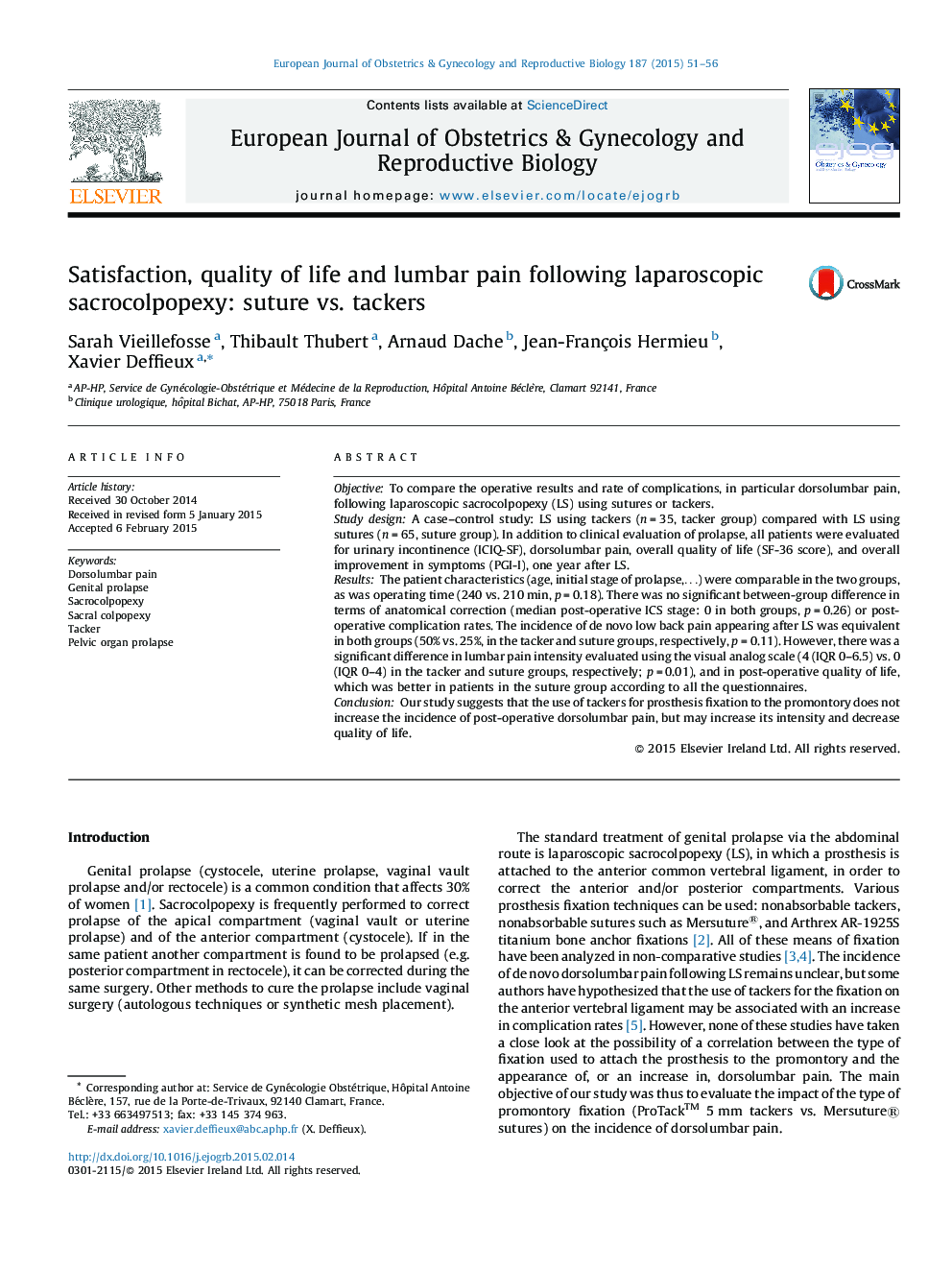| Article ID | Journal | Published Year | Pages | File Type |
|---|---|---|---|---|
| 3919603 | European Journal of Obstetrics & Gynecology and Reproductive Biology | 2015 | 6 Pages |
ObjectiveTo compare the operative results and rate of complications, in particular dorsolumbar pain, following laparoscopic sacrocolpopexy (LS) using sutures or tackers.Study designA case–control study: LS using tackers (n = 35, tacker group) compared with LS using sutures (n = 65, suture group). In addition to clinical evaluation of prolapse, all patients were evaluated for urinary incontinence (ICIQ-SF), dorsolumbar pain, overall quality of life (SF-36 score), and overall improvement in symptoms (PGI-I), one year after LS.ResultsThe patient characteristics (age, initial stage of prolapse,…) were comparable in the two groups, as was operating time (240 vs. 210 min, p = 0.18). There was no significant between-group difference in terms of anatomical correction (median post-operative ICS stage: 0 in both groups, p = 0.26) or post-operative complication rates. The incidence of de novo low back pain appearing after LS was equivalent in both groups (50% vs. 25%, in the tacker and suture groups, respectively, p = 0.11). However, there was a significant difference in lumbar pain intensity evaluated using the visual analog scale (4 (IQR 0–6.5) vs. 0 (IQR 0–4) in the tacker and suture groups, respectively; p = 0.01), and in post-operative quality of life, which was better in patients in the suture group according to all the questionnaires.ConclusionOur study suggests that the use of tackers for prosthesis fixation to the promontory does not increase the incidence of post-operative dorsolumbar pain, but may increase its intensity and decrease quality of life.
